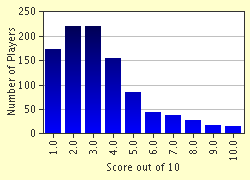Quiz Answer Key and Fun Facts
1. Which of these is the most literal translation for the name of Inuyasha's half-brother?
2. Which of these is the most literal translation for the ultimate attack of the Tetsusaiga?
3. What is the translated name of Inuyasha's most basic attack?
4. Appropriately named, what is the translation of the main villain's name?
5. We should all know that "Inu" means "Dog"... but what does the kanji for "Yasha" mean?
6. According to the translation of Miroku's name, he is a messiah sent to set the world right.
7. Which of Sesshoumaru's traveling companions has a name that translates to "companion"?
8. What is the best translation of the name of Sango's standard weapon?
9. You should know by now that Kagome will use the word "Sit" to nullify Inuyasha's power and send him crashing to the ground. Therefore, if Kagome were to invite Inuyasha to sit at a chair, would the same thing happen?
10. Mica, also called "isenglass" is a crystalized mineral resistant to both heat and electricity. Which "Inuyasha" character has this name?
Source: Author
PrinceMagus411
This quiz was reviewed by FunTrivia editor
ladymacb29 before going online.
Any errors found in FunTrivia content are routinely corrected through our feedback system.

